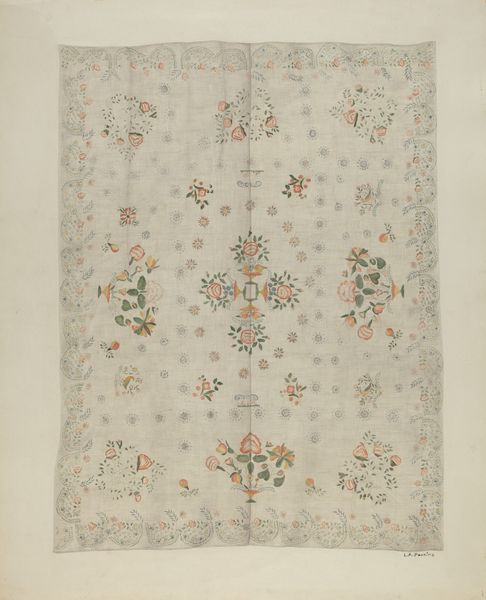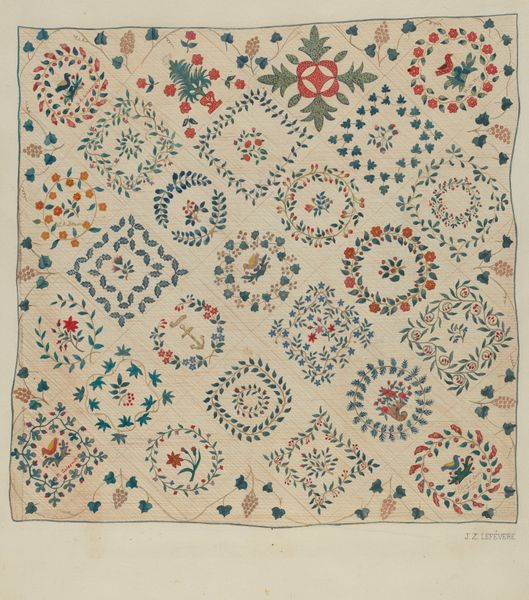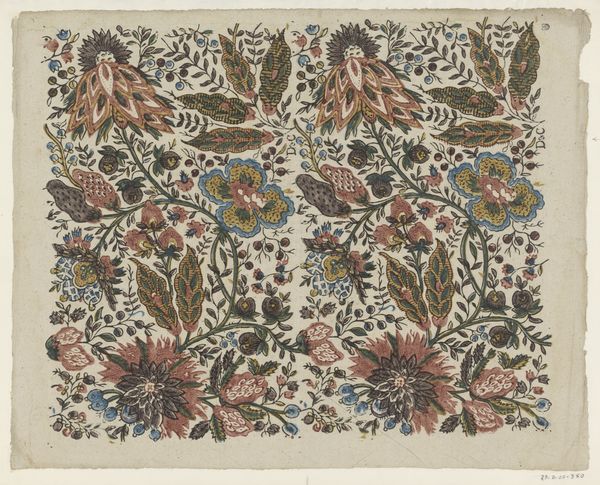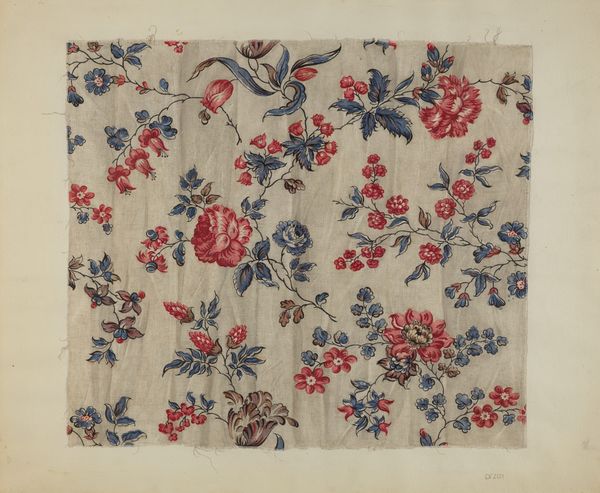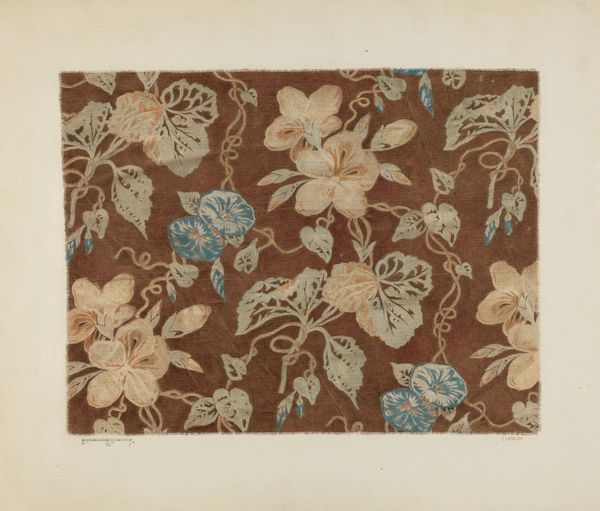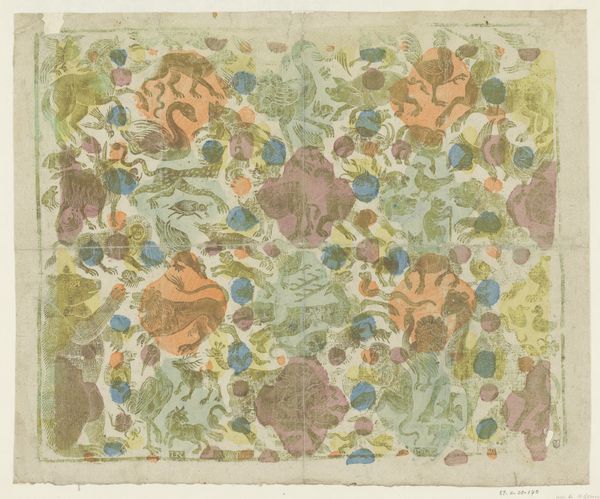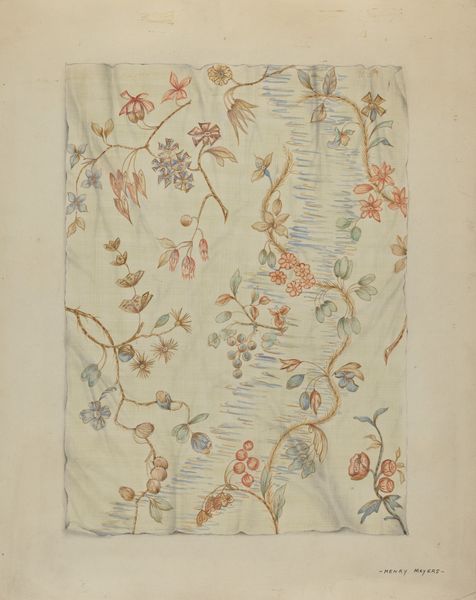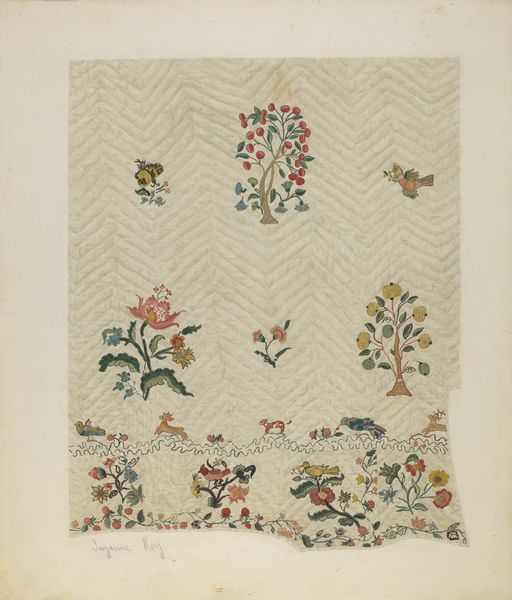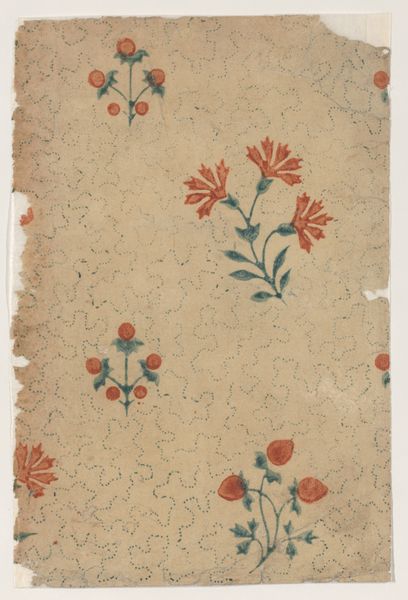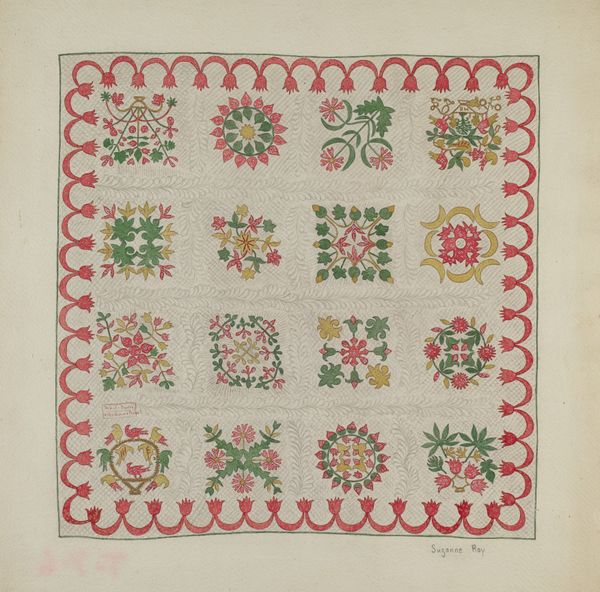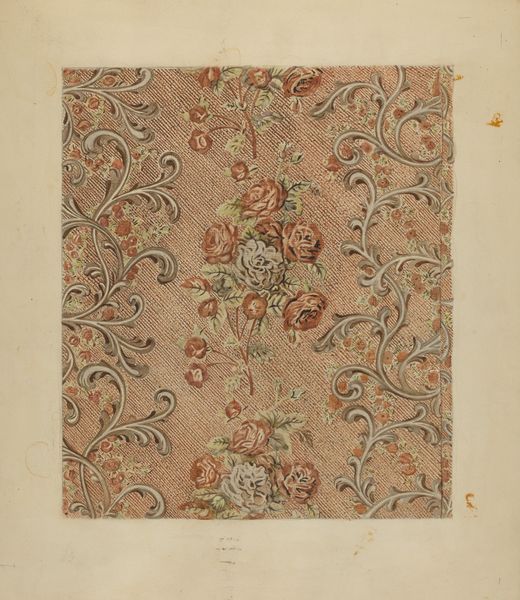
drawing, textile
#
drawing
#
natural stone pattern
#
naturalistic pattern
#
pattern
#
textile
#
hand-embroidered
#
intimism
#
organic pattern
#
repetition of pattern
#
pattern repetition
#
watercolour bleed
#
textile design
#
decorative-art
#
imprinted textile
#
layered pattern
Dimensions: overall: 43.5 x 56.5 cm (17 1/8 x 22 1/4 in.)
Copyright: National Gallery of Art: CC0 1.0
Editor: Here we have Edward Kibbee's "Printed Bedspread" from around 1938, a textile piece. I'm really drawn to the intricate, almost folksy quality of the floral and geometric patterns. How do you see this work, considering its composition? Curator: I see a meticulously crafted surface, where the arrangement of forms takes precedence. Notice the repetitive, yet slightly varied, floral motifs. Their rhythmic placement establishes a visual harmony. The contrasting geometric border further emphasizes the textile's structure. What role do you think the drawing plays, compared to a painting? Editor: I guess the flatness becomes more of an asset, highlighting the pure design and the way shapes interact, like an early form of graphic design perhaps? Curator: Precisely. The lack of perspectival depth focuses our attention on the two-dimensional interplay of shapes, colors, and lines. This reinforces the decorative aspect, subordinating any illusionistic aspirations to the overall pattern. The artist is using drawing as a tool to develop a language of signs rather than depiction of reality. How do you see that play out within the colors selected? Editor: The restrained palette, dominated by muted reds, greens and blues, helps create a unified and soothing effect. None of the colors fight each other for dominance. Curator: A very insightful observation. The controlled chromatic range enhances the design's visual coherence and rhythm. It encourages us to focus on the underlying structure of the artwork itself, as an independent element removed from the context of its intention as a useful object. Editor: That's really changed my perspective on this. I was initially caught up in the image but thinking about its composition, repetition, and flatness of form has changed my mind. Curator: Indeed, a formalist reading directs us towards the intrinsic elements that define this work, divorced from any narrative or utilitarian purpose. It reveals a rich aesthetic experience rooted in the language of forms.
Comments
No comments
Be the first to comment and join the conversation on the ultimate creative platform.
